► iX-rivalling Polestar 3 driven
► Up to 390 miles of range
► The EX90’s sportier sibling
Let’s start by clearing something up. The Polestar 3 is the brand’s biggest SUV, despite the existence of the 4. Unlike most manufacturers where bigger is better, Polestar gives the highest number to its newest car.
Where the 4 chases the electric Macan, the 3 is more Cayenne-sized, challenging the likes of the Audi Q8 E-Tron, BMW iX and Mercedes EQE SUV. It’s a fierce part of the market, with newcomers like the Lotus Eletre offering something a bit different.
So too does the Polestar 3. It’s positioned as a more driver-focused alternative infused with a large shot of Scandinavian minimalism. With the focus on sports, utility does fall by the wayside somewhat.
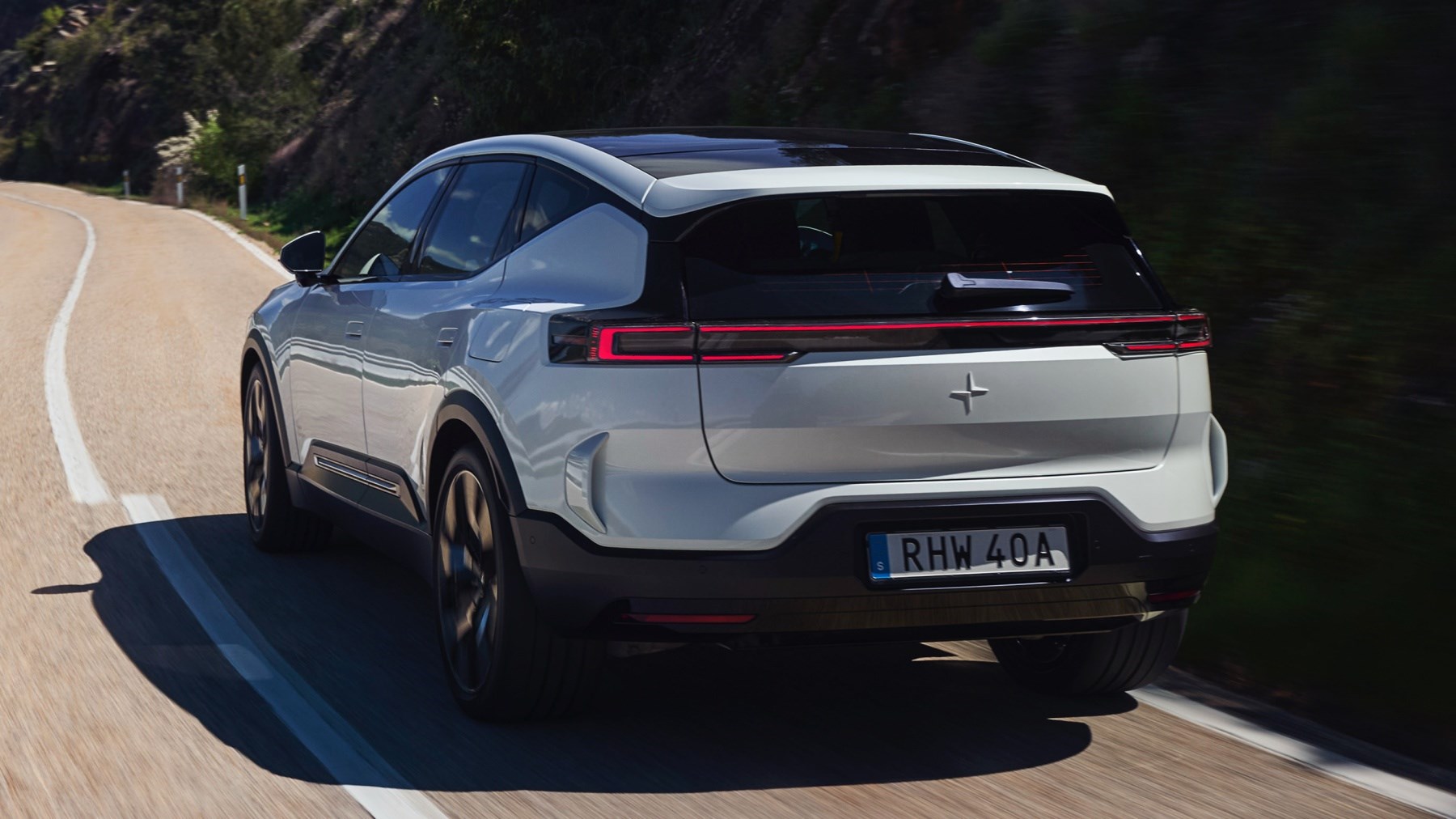
At a glance
Pros: Generous rear space, luxury feel, handling
Cons: Relatively small boot, stiff ride with Performance Pack
What’s new
Everything. While the Polestar 2’s body is a melange of coupe, crossover and saloon, the Polestar 3 is an unashamed SUV, although one with a roofline that falls towards the rear of the car. It looks striking in the flesh, well proportioned and benefiting from the packaging advantages of the EV-only SPA2 platform shared with the Volvo EX90 which allows a sizeable 2985mm wheelbase within the 4900mm overall length.
Aerodynamics have played a big part in the design, the best example being the narrow wing element integrated into the leading edge of the bonnet to help clean up airflow (Polestar quotes an impressively sleek 0.29 coefficient of drag.) At the rear is a full-width lightbar and a rear wiper that looks nearly as dinky as the one on the Mini hatchback.
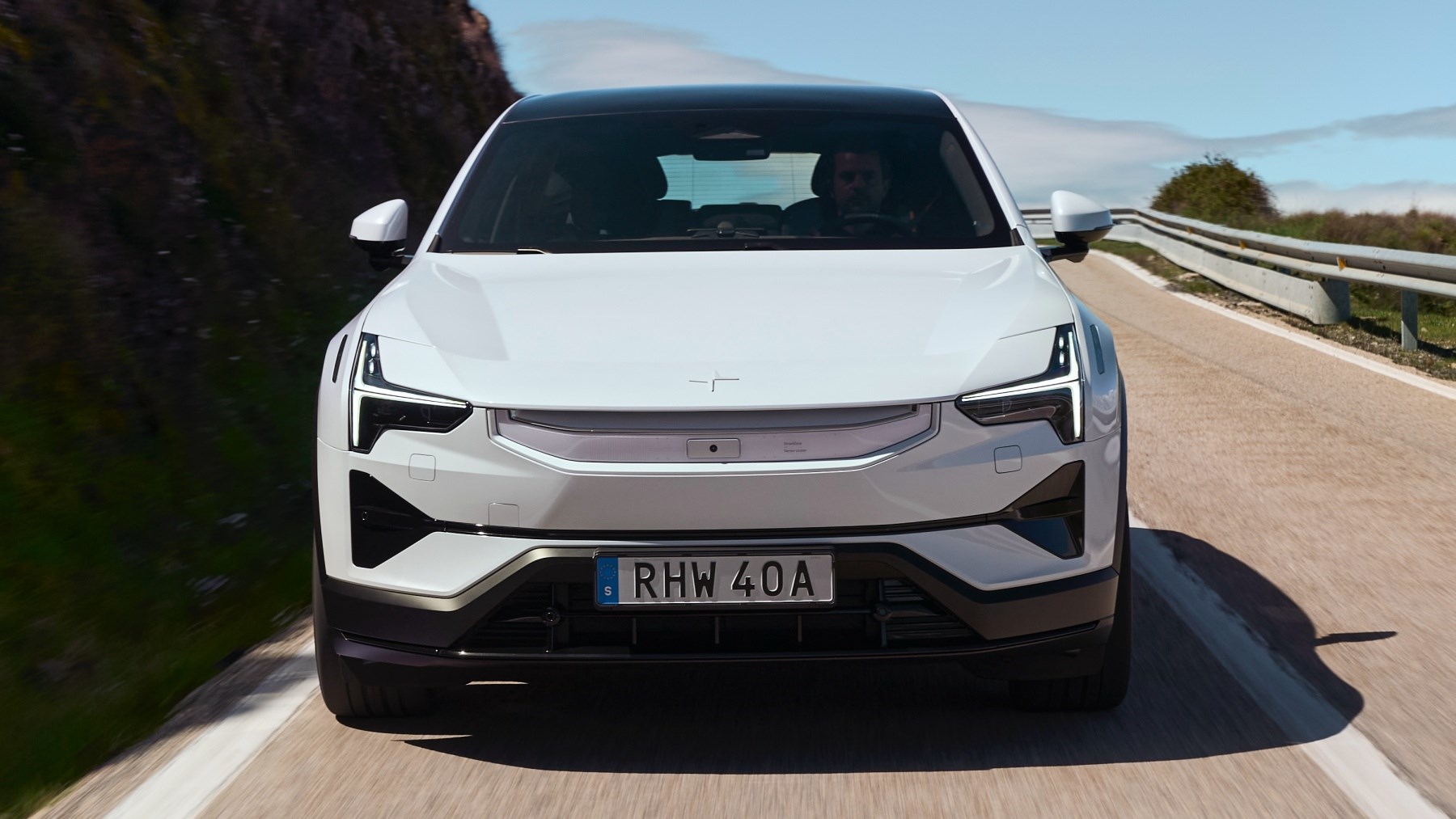
What are the specs?
While other versions will follow, the Polestar 3 will be launched with the straight choice between the regular AWD version and the slightly quicker Performance pack. Both feature the innovation of a twin-clutch torque-biasing differential for the rear motor, and use the same XL 111kWh battery pack, with 107kWh usable.
That’s good enough for a 390 mile range for the regular dual motor, which is up on key rivals. This drops to a still reasonable 349 miles if you opt for the Performance pack.
Although the CATL supplied lithium-ion battery pack has a 400-volt architecture, in contrast the 800-volt systems of sharp-end rivals, it will support DC fast charging at speeds of up to a claimed 250kW, giving the prospect of a 10 to 80 percent recharge in as little as 30 minutes in optimal conditions.
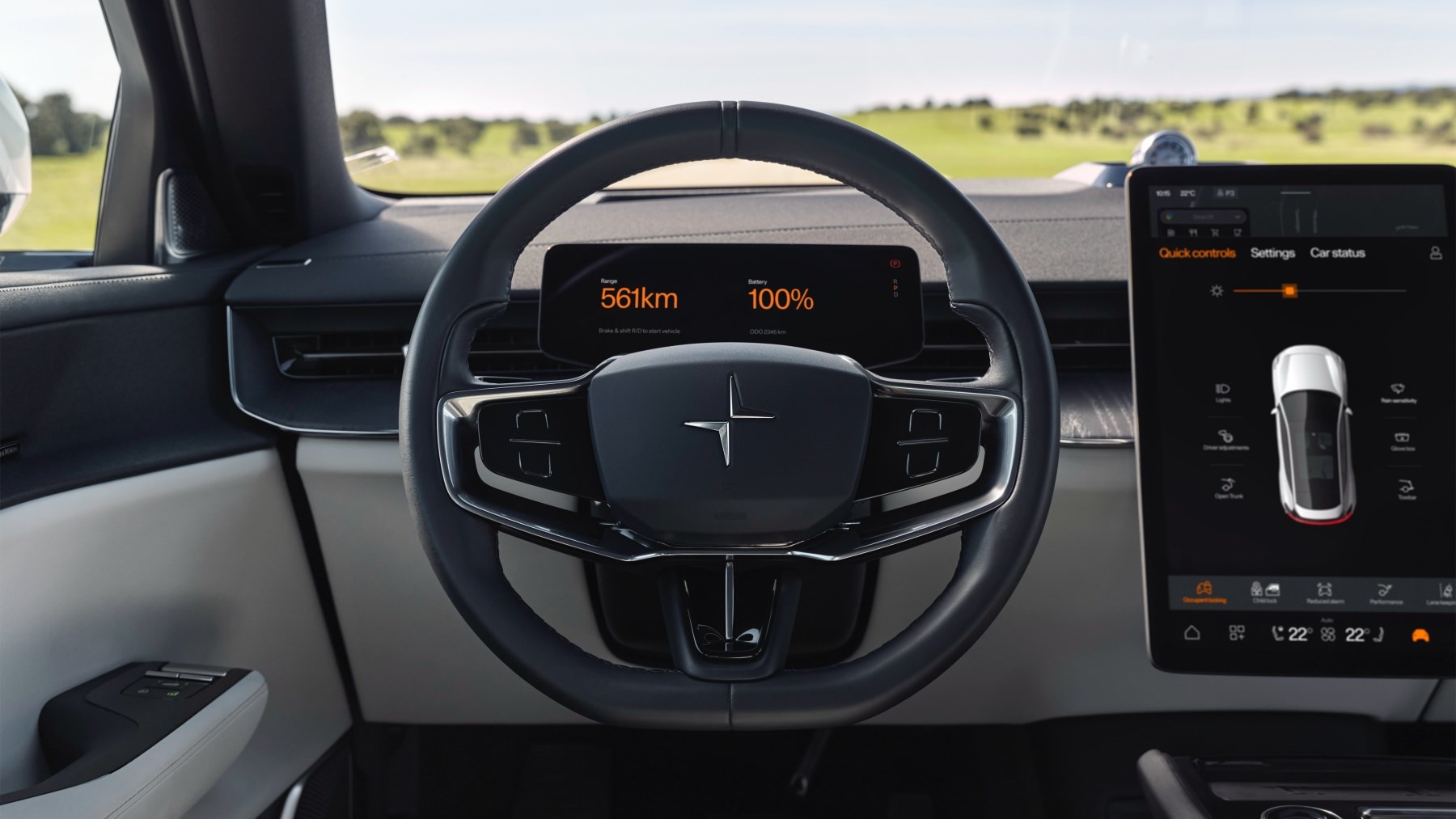
What about the interior?
Moving inside, the cabin is well finished and impressively spacious for human occupants, legroom in the back feeling particularly generous. Unlike the EX90, the 3 will only be offered as a five-seater, allowing the rear bench to be placed farther back in the wheelbase. Headroom is good enough, but the falling roofline means its less generous than most rivals.
Boot space is stingy by comparison, with a wide but shallow compartment resulting in only 394-litres with the rear seats in place, although with another 90-litre hidden compartment under the boot floor. There is another 32-litre frunk at the other end, intended for charging cables.
A panoramic glass roof is standard, providing a light airiness to the interior especially when trimmed with lighter colours. Material quality impresses and the overall effect is calming and very appealing. The ambient lighting is planet themed, so changing the mood comes with a free science lesson.

Physical switchgear has been pretty much culled; even the hazard light switch has been moved to the roof console. Beyond the basic driving controls, everything is managed by the vast 14.5-inch portrait orientated touchscreen running Google’s Android Automotive operating system.
It’s a system that looks great with its crisp graphics and clean animations. Apart from the odd hiccup from our pre-production car, it proves responsive to commands. There is just far too much in there, so even though a few shortcuts here and there help, we’d still like more physical controls. Changing your driving position shouldn’t be this hard.
How does it drive?
Plenty of high-end SUVs have already proved how effective smart dynamic systems can be at apparently bending the rules of physics. On paper, the Polestar 3 would appear to lack several of these: there is no active anti-roll system, or rear-steering set-up to sharpen responses.
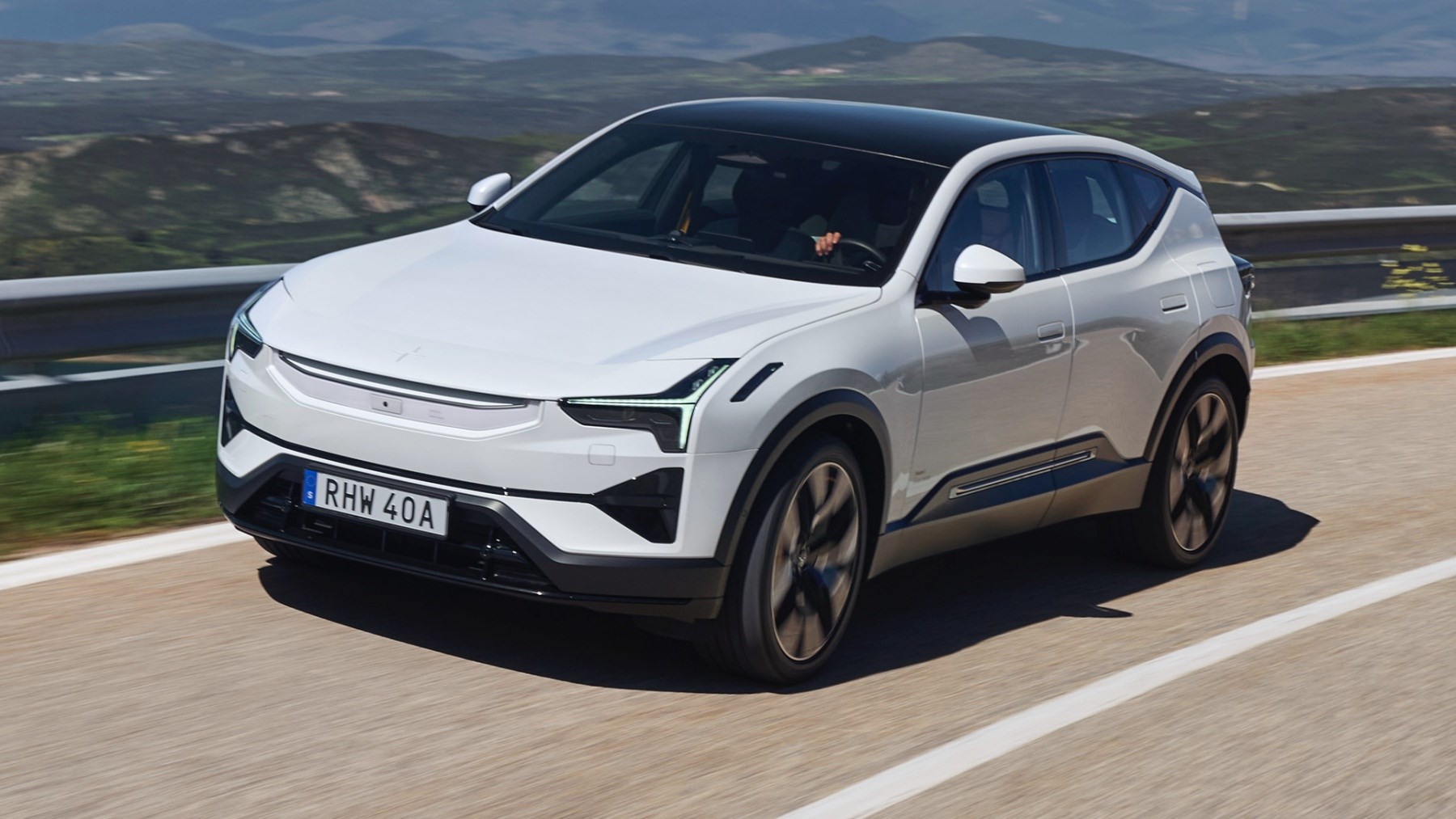
The 3’s clever diff is more subtle in its intervention and far more natural than some of the rear-steer systems. While you’re aware it’s unwilling to push wide on the way out of tight bends, it trims your line rather than drastically alters it.
That diff and its two clutches don’t just allow fine torque distribution under power, they also work under deceleration, too. A bit more regen on the inside rear wheel than the outside helps tuck the nose in on corner entry, helping build agility further. Even so, the 3 much prefers a neutral line than an exuberant one.
With plenty of thumping from the suspension and more vertical movement than you might expect with the Performance Pack fitted, we’d recommend the more supple regular Polestar 3 if you value comfort. Body control is still good, yet it feels far less fidgety on smooth Spanish roads.

This is a car that’s satisfying to drive briskly, if not a huge amount of fun when you’re really on it. The steering is partially to blame here, with too much weight in all modes and strong self-centring that makes it tricky to get into a pleasing rhythm on twisting roads.
Before you buy
Paying the £5600 extra for the Performance brings 22-inch alloys over the standard 21s, more aggressive dynamic software for various active systems and a modest performance upgrade. Polestar claims the Performance can dispatch the 0-62mph benchmark in just 4.7-sec – 0.3-sec quicker than the regular car – although both versions are ultimately curtailed by the same 130mph limiter.
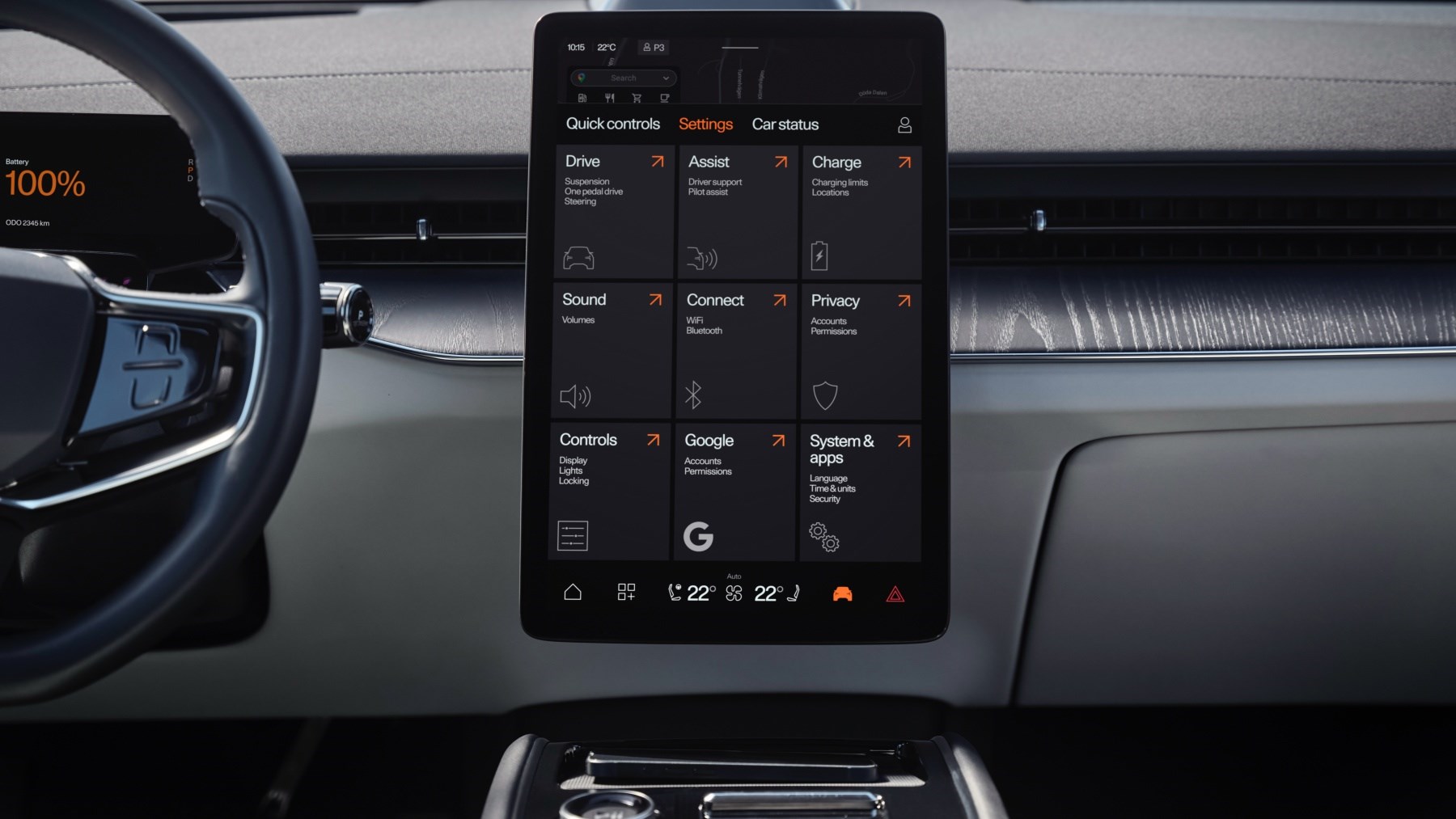
Beyond that, you can add a Plus Pack with luxuries like a 25-speaker Bowers & Wilkins stereo, soft closing doors, heated rear seats and a heated steering wheel. There’s also a Pilot Pack which improves the driving assistance features and adds a head up display.
Polestar 3: verdict
This is Polestar’s most convincing effort yet, sticking a Swedish cat amongst the Bavarian pigeons. The spacious and well-appointed interior impresses, as does the handling and promised range.
Boot space is tighter than you’d expect for the class and there’s just too much reliance on the central touchscreen. Even so, it’s a fine alternative to the BMW iX, and certainly more recommendable than a Mercedes EQE SUV.